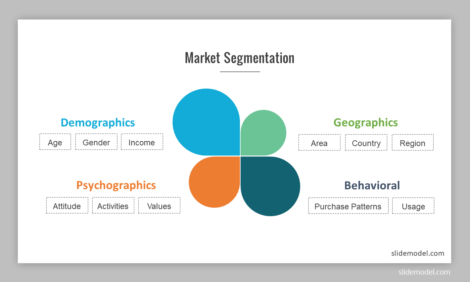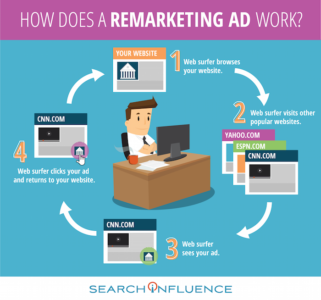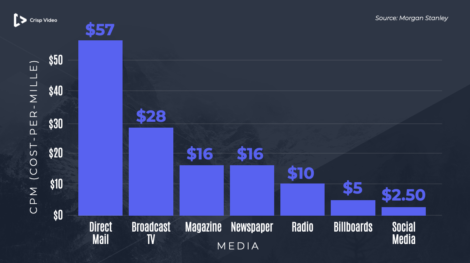As the great American singer-songwriter Bob Dylan once said, “Times, they are a-changin’” — and when it comes to ad buying, boy, was he right.
In the ever-evolving world of marketing, there is a seemingly infinite number of opportunities a law firm has to make a lasting impression on a potential client, depending on their chosen medium.
Before the emergence of modern marketing capabilities, law firms relied on billboards, magazines, radio, television, and other traditional media to get their message across to buyers. Now, there are a variety of new ways, thanks to new technologies, strategies, and avenues such as social media, influencer marketing, and even artificial intelligence.
Full transparency: this blog post is not meant to say your law firm should bag the old methods and exclusively use one over the other, or that digital is necessarily better than traditional, and vise versa.
Instead, it is meant to give you a better understanding of the world of digital marketing by using comparisons and examples of traditional advertising that you may already have a better understanding of.
In this post, we’ll be looking at the old versus the new of the following:
Segmentation in Ad Buying
Okay, let’s talk about segmentation in ad buying.
This popular marketing buzzword is best defined as the division of potential buyers based on certain characteristics such as demographics, psychographics, and the like.
According to Single Grain, 59% of buyers say that personalization plays an important role in their buying decisions.
By segmenting potential clients, law firms can then better personalize their marketing campaigns to resonate with a group of people who have similar interests, therefore increasing the likelihood of a purchase.
But, this wasn’t always the case. Before the development of contemporary market segmentation, ideally done in the digital sphere, marketers had to rely on blanket approaches. This meant casting wide nets without the ability to see where they were excelling and where tweaks needed to be made.
As time has gone on and technology and capabilities evolved, we have gained the ability to target using proven parameters to best reach a potential buyer — and in an attorney’s case, a client. Before the emergence of analytics through modern digital marketing platforms, law firms were limited in their targeting capabilities.
Now, we have the ability to get in-depth analyses of an individual’s gender, geographic location, income, marital status, interests, and purchase patterns simply through their internet activity — and that just scratches the surface.

Diving in even deeper, law firms are now capable of retargeting.
What is retargeting, you ask? Check out this helpful infographic from Search Influence below.

With retargeting, not only are you able to get in front of your ideal client once, but you can target them with your ads multiple times, creating brand awareness and continuing to nurture them until they are ready to make a buying decision to hire your law firm.
Platforms for Buying Ads
If your law firm were to create a full-fledged marketing campaign in 1995, ad buying options would most likely consist of everything from television, magazines, and billboards to phone books, bus stop benches, and direct mail flyers.
Sure, these are still around and definitely useful in building your brand and getting your name out there, but they are no longer the end-all-be-all of legal marketing.
With the emergence of the internet, digital marketing has taken ad buying by storm, creating an entirely new way for law firms to meet consumers where they spend their time.
Gone are the days where you’d put an advert out with the hope of the right people seeing it at the right time.
Although it’s historically a popular medium for law firms to use for marketing, you no longer have to rely on sheer fate to reach consumers as their car drives past a billboard.
Now, law firms can create digital billboards using the ad buying capabilities of social media platforms to get in front of their ideal audience — everywhere.

Whether it’s mobile, banner, or in-feed placements, channels like Facebook, Instagram, LinkedIn, and YouTube all have the power to place your law firm’s ads all over the internet for much cheaper than traditional mediums.

This means your marketing dollars go further, making it possible to reach more of your ideal audience for less.
Ad Buying and Messaging
At some point or another, you’ve probably been inundated with clickbait-y ads prompting you to “BUY! BUY! BUY!” and “Act NOW!”

These are popular methods used to of course cause panic and elicit an immediate response — otherwise known as direct marketing. They’re straight to the point and don’t sugarcoat the fact that their main goal is to get you to make a buying decision now.
However, we’ve now shifted to a whole new approach known as top-of-mind brand awareness.
What does this mean for you, the law firm owner? Plainly, you have to reach potential clients through a variety of channels, creating multiple touchpoints along the way until they are nurtured enough to trust your brand and make a decision.
Sure, it’s a long-game approach, but it’s one that works.
Take a look at this Crisp Social Stack case study for VB Attorneys, for example.
By saturating the four main social channels — Facebook, Instagram, YouTube, and LinkedIn — with their ads, they were able to meet their ideal audient where they spend their time, creating familiarity with their brand.
This ultimately led to a 46% increase in website traffic for their law firm, which in turn further increased their chances of turning one of those site visitors into a client.
Final Thoughts
Ad buying is not what it once was 30 years ago, and we can’t even begin to fathom what it will be like 30 years into the future.
However, in order to stay relevant with your audience and help your law firm stand the test of time, you as a law firm owner must stay on top of the trends and advancements in marketing capabilities.
In conclusion, if you stay ahead of the curve, you will stay ahead of your competitors.







